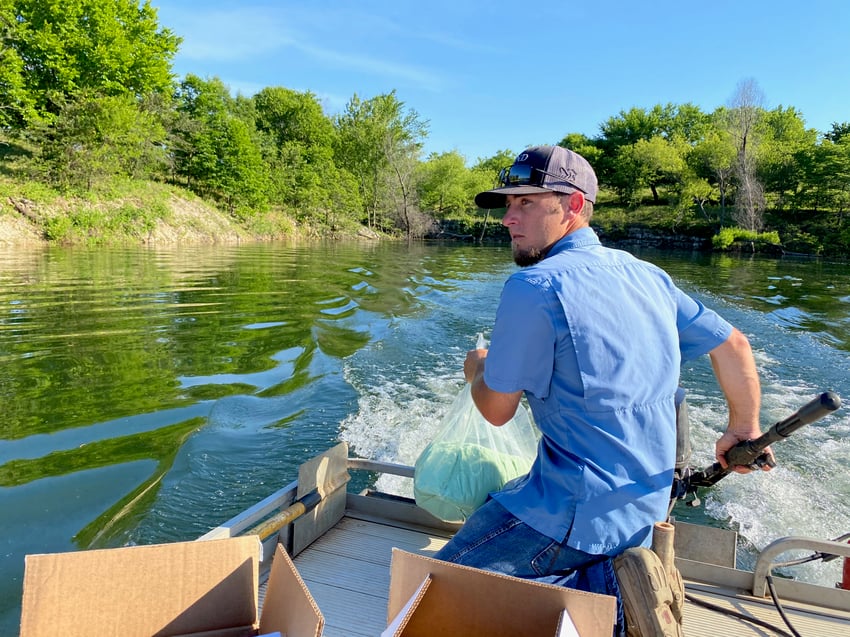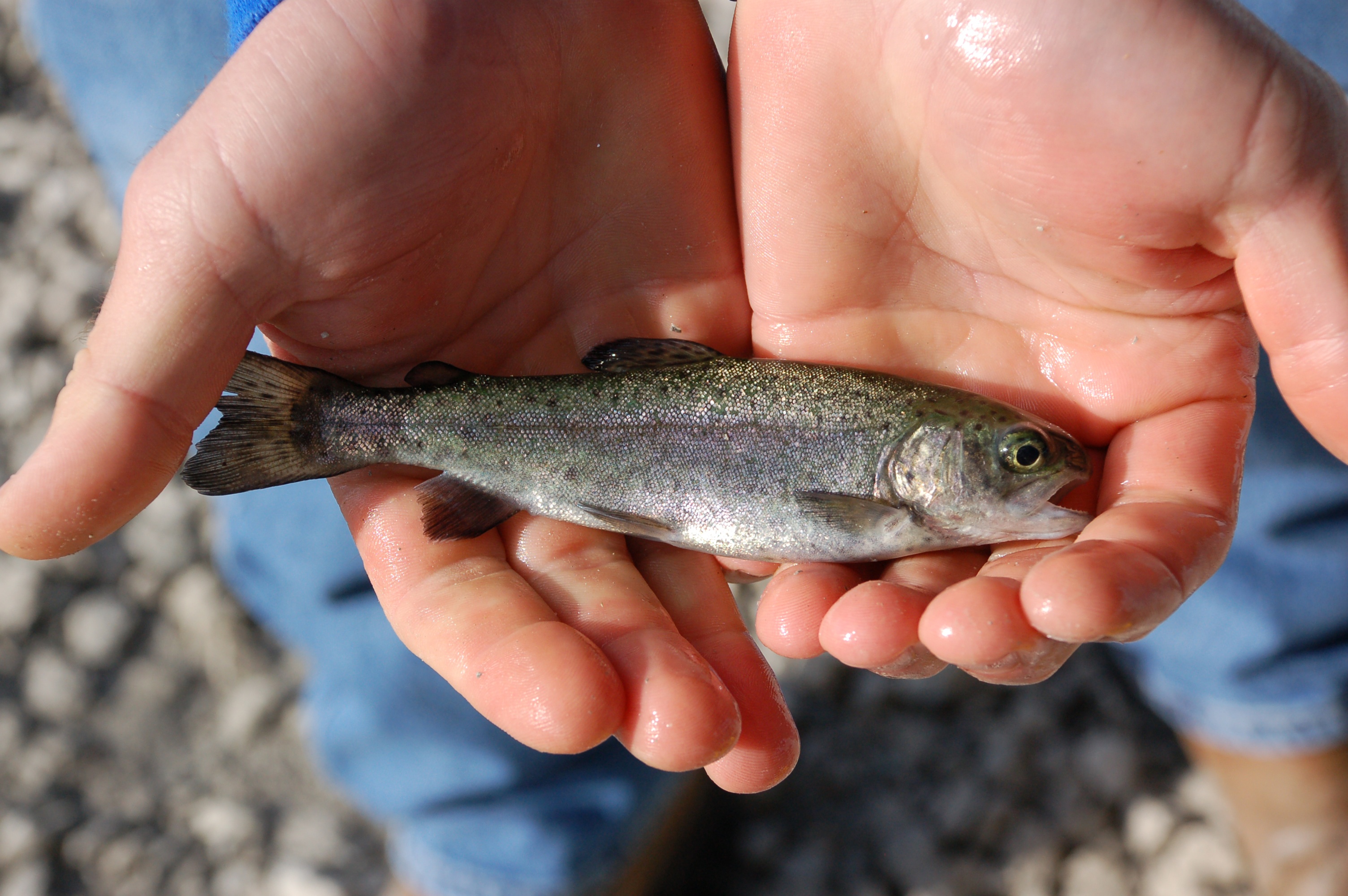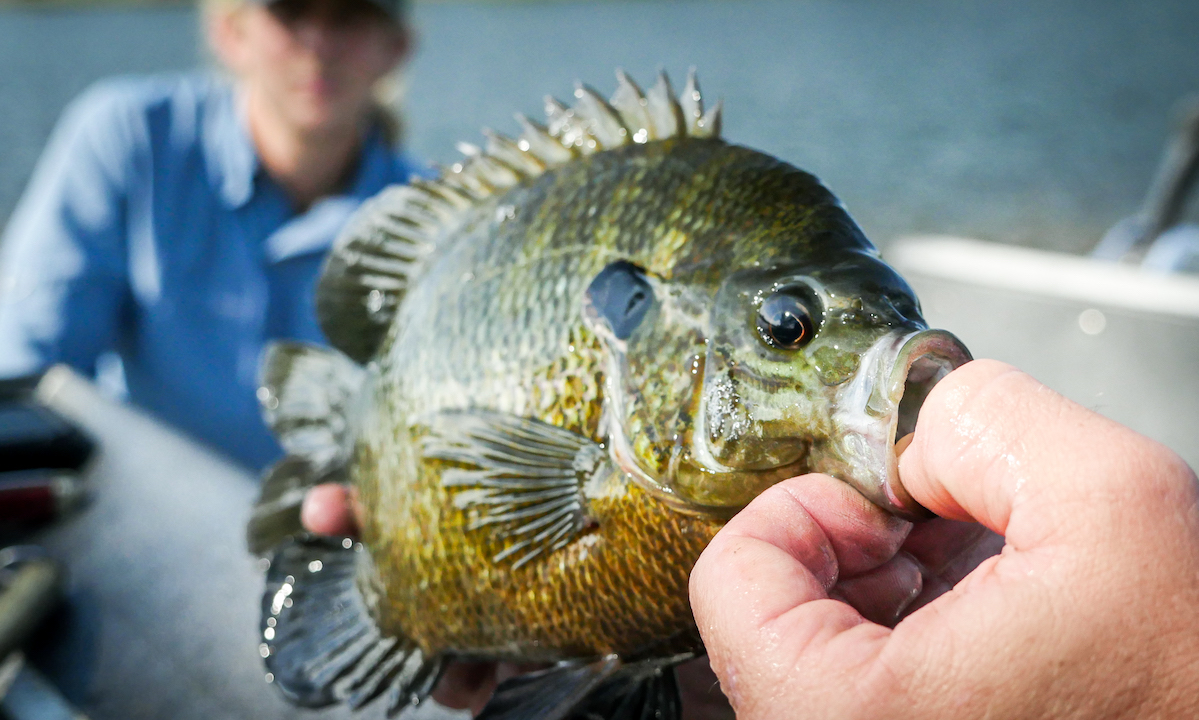To have a successful bass fishery, it's critical to have a sustainable forage supply for those bass to feed upon. Here we share our favorite pond management techniques to increase the forage production in your fishery and help you grow fat, healthy largemouth bass.
Develop a Sustainable Forage Supply to Grow Pond Bass
There are many factors and elements that come into play when creating a sustainable trophy-class bass fishery.
While no two lakes are alike, there is one critical component that all successful fisheries have: a sustainable forage supply.
Maintaining a sufficient forage density is essential for managing consistent growth rates in your predator fish (AKA Largemouth Bass). When your forage density fluctuates, so do the growth rates of your predators. So it is important to monitor the forage population in your fishery.
The Effect Forage Density Plays in Your Ponds Bass Growth
Times of low forage density lead to decreased growth rates for two reasons; frequency of feeding decreases, as does the nutritional gain of each meal. The net energy gain from each meal is reduced because the predator must expend more energy to search and capture the forage item.
On the other hand, during times of high forage density, predators are able to feed more efficiently because they expend less energy to search for and capture forage. The increased net energy gain results in an increased growth rate for the predators.
Management Techniques for Improving Forage Bioavailability in Small Ponds
There are several management techniques that you can employ to increase forage productivity.
The two basic strategies are increasing food availability for your forage species or directly increasing forage density through supplemental stockings.
Either of these can accomplish your goals, but to decide which one or combination is best for your lake, let's go over each management technique.
Pond Fertilization

Pond King fisheries biologists fertilize a lake by a process of inorganic nutrient loading with a water-soluble, phosphorus-rich fertilizer.
By increasing nutrient concentrations of nitrogen and phosphorus, we can induce a planktonic algae bloom. This planktonic algae bloom feeds your entire ecosystem from the base of the food chain up.
How Algae Boosts Your Pond’s Ecosystem
As primary producers, planktonic algae/phytoplankton convert inorganic nutrients into organic biomass. Then, these single-cell organisms feed the zooplankton. And zooplankton serves as the primary forage for many baitfish species (ex. shad) as well as larger predatory fish fry.
That said, fertilizing not only helps increase food for your forage species but also helps increase growth in the early life stages of many predator species as well.
What Size Lakes or Ponds Benefit from Fertilization?
While we generally only recommend fertilization for lakes larger than 2 acres, planktonic algae blooms can happen naturally as well due to nutrient loading as a result of runoff in the lake's watershed.
It is a good idea to test the water first to determine existing nutrient concentrations as too much phosphorus can lead to excessive algae and nuisance aquatic plant growth. You can measure blooms visually by measuring water clarity.
Planktonic algae/phytoplankton blooms create a green tint in the water due to the chlorophyll of these tiny unicellular plants; maintaining 18-24 inches of visibility indicates a healthy bloom.
Supplemental Fish Feeding
Supplemental feeding of a pelleted feed is a great way to increase the broodstock density of bluegill. The pelleted feed increases nutrient availability for bluegill of all sizes and, in turn, increases their growth rate, allowing more individuals to be recruited into larger classes in less time.
Once fish reach a size class large enough to avoid most predation, they are considered broodstock. Increasing broodstock density increases the reproductive potential of the population as fecundity is positively correlated with body mass. Recruiting more fish into the broodstock is an important step in creating a sustainable forage source for your predator fish.
Each year's recruitment needs to be greater than or equal to the predation rate of the previous year to replenish those lost to predation. This ratio ensures enough forage for predators to support consistent growth rates year after year.
What is a Good Feeding Ration to Grow Broodstock Bluegill?
Feeding a 32% feed at a rate of 2 pounds per day, per acre (1 pound twice a day) is standard practice when water temperatures are above 55 degrees Fahrenheit starting in spring and continuing until water temps drop back below 55 degrees in the fall.
If all the feed has not been consumed within 10 minutes, feed less. If all feed is consumed quickly, you can try increasing the amount of feed.
Supplemental Stocking of Baitfish
You can view supplemental stocking in a few different ways.
First, many private lake and pond owners choose to stock seasonally, yearly, or biyearly in an effort to boost their ecosystem's growth.
Pond King’s biologists suggest multiple feeding options to boost the baitfish population to help ensure forage diversity and density.
The suggested baitfish species for growing big bass are:
- Shiners
- Fathead minnows
- Shad
- Bluegill
Secondly, you can replenish your forage populations as part of a recovery program designed to return a struggling population to a self-sustaining population again.
When we create our stocking plans, we strive to establish and maintain a balanced fishery, but sometimes mother nature interrupts the balance with a flood, drought, or fish kill.
In these situations, you should restore balance to the ecosystem as quickly as possible to minimize the effects on your predators. To compensate for natural events and quickly get a newly acquired pond back on track, we often utilize supplemental stocking. Supplemental stocking rates will vary depending on the size and condition of the current fishery.
Stocking Alternative Forage Species
Utilizing alternative forage is a technique professional pond managers use quite frequently. Typically, Pond King recommends using this strategy with Mozambique Tilapia from late spring through summer and Rainbow Trout during the winter.
How Tilapia Benefits a Lake’s Forage Base
Stocking Tilapia does a few essential things for your ecosystem:
- It relieves some of the predation pressure off of your bluegill, fathead, and Golden Shiner populations. Alleviating this pressure on the forage species helps ensure that recruitment and survivorship are greater than or equal to the predation rate.
- Tilapia provide a biological service to the environment by consuming algae, helping to prevent thick floating mats, or the need for chemical treatments. This service alone is often a reason for stocking Tilapia.
- Tilapia reproduce rapidly (spawning every three weeks) during the summer, then die off in the winter when water temperatures drop below 55 degrees.
The seasonality of Tilapia ensures a high density of potential forage for bass without the worry of overpopulation. Keep in mind that this may not be the case based on geographic location.
Check average winter water temperatures before stocking Tilapia.

Benefits of Stocking Rainbow Trout in Ponds and Lakes
Rainbow Trout are an excellent source of forage for bass in winter. Trout are soft rayed fish and slow swimmers, making them easy for Largemouth Bass to consume.
Due to the profile of a trout, bass can safely eat a trout up to ½ their body length. In this way, bass expend minimal amounts of energy to catch slow swimming fish resulting in a high net energy gain, promoting growth through the winter, when growth might otherwise pause due to slow metabolism in response to the cold water.
Six-inch feeder trout are common as they are readily available forage for most bass in your lake/pond.
Do Not Neglect the Importance of Providing Enough Feeding Options for Bass
Maintaining forage availability is crucial for growing big fish. Increasing the net energy gained from each meal promotes quicker growth and overall improved condition of your fish. In most private bodies of water, bluegill are the dominant forage for Largemouth Bass.
Still, these same strategies apply to other bodies of water where the predominant forage may be something else.
Creating a solid base of the food chain through fertilization, supplemental feeding, or both is key to promoting consistent and improved growth rates in predatory fish.
In addition, keeping a close eye on forage population density will aid in deciding on whether or not to supplementally stock baitfish or if stocking some alternative forage is necessary to relieve some predation and allow your primary forage some time to rebound.
Call Pond King for Forage Fish Stocking and Pond Management
While maintaining a balanced ecosystem is the most important principle to remember, predator harvest is also crucial to increasing forage availability as the forage populations themselves. For any questions please contact us or call and we will be happy to help you with your lake.
See y'all down at the pond.




